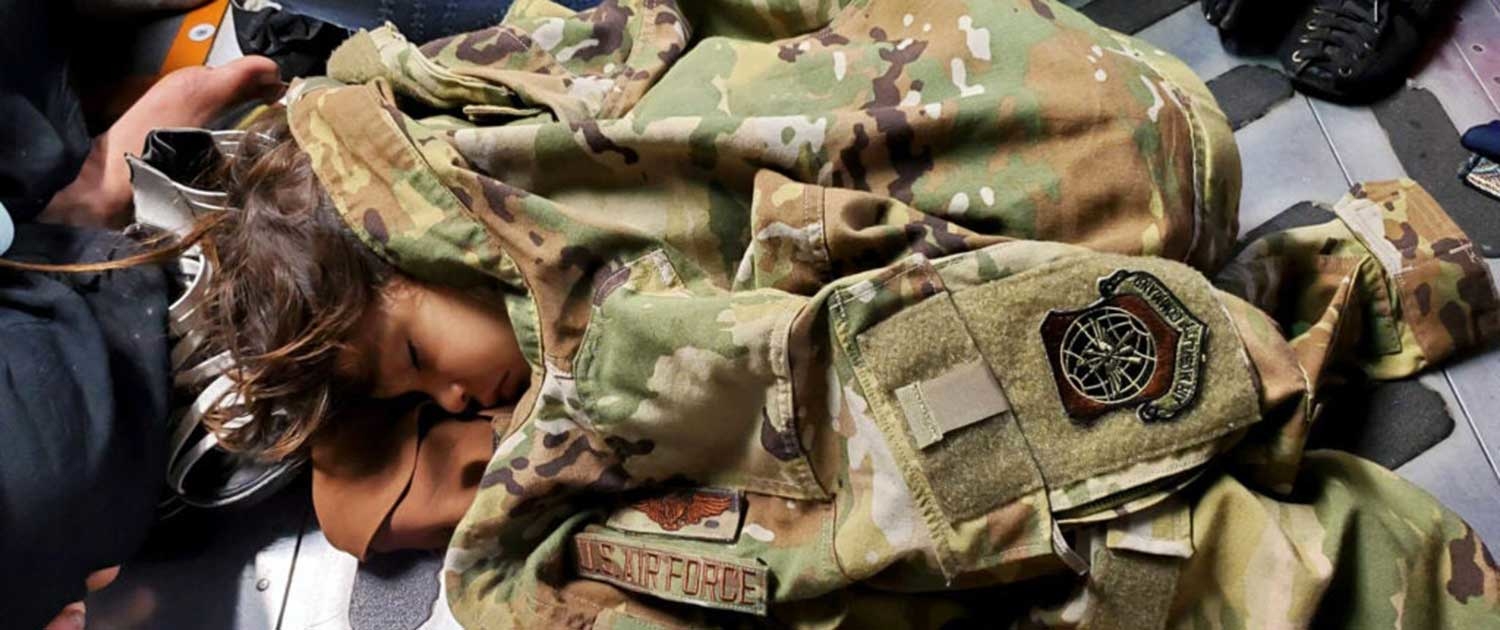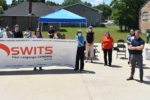American Refugee Experience
The cargo plane, callsign Reach 871, was ready to fly from Kabul, Afghanistan, to Qatar. The air traffic controller couldn’t believe what the pilot had just told him. “OK, 800 people on your jet? Holy cow!”
Reach 871 was “only” carrying 640 passengers, but photos from the flight—hundreds of Afghans in the massive cargo bay, a child sleeping peacefully under the loadmaster’s uniform shirt—told the story of a chaotic evacuation, and of people yearning for a safe home in America.
The Refugee Nation
America is a nation of immigrants, but it’s accurate to call us a nation of refugees. Millions came here to escape oppression or disaster.
The Puritan pilgrims were the first, settling in Massachusetts beginning in 1620. Like them, many others settled in the colonies to escape Europe’s religious persecution and constant sectarian warfare.
An even larger wave of refugees arrived 225 years later, during the Irish Potato Famine. For seven years, blight destroyed crops across Ireland. The Irish called it “an Drochshaol,” literally “the bad life.” The population fell by 25% as a million starved and well over a million fled the country. The majority sailed to Canada and America. Poverty-stricken, many remained in the port cities where they first arrived. By 1850, at least 25% of the population in Baltimore, Boston, New York City and Philadelphia was Irish. They suffered anti-Catholic prejudice, but also managed to integrate easily because they spoke English.
Many moved to Milwaukee and Chicago in the coming years, joining Irish residents from earlier waves of immigration. In 1850, 14% of Milwaukeeans were Irish; in 1852, an Irish immigrant was elected mayor. A number of Civil War regiments from Midwest states were made up solely of Irish volunteers.
In the 20th Century, millions fled to America from authoritarian countries, such as Nazi Germany, the communist regimes of Eastern Europe, and Cuba. Over 1 million Vietnamese, Laotian, and Cambodian “boat people” and formal asylum seekers emigrated to America after the Vietnam War. Tens of thousands were of the Hmong ethnic minority, and many settled in Wisconsin. At one point, approximately 1 of every 100 Wisconsinites was Hmong, and they are still the largest segment of the state’s Asian population. Few Hmong spoke English, and some still only speak the Hmong language and depend on interpreting and translation services.
However, most Southeast Asian refugees adjusted to life in the U.S. successfully. They and their American-born children have become prominent business and political leaders in their adopted communities. Eric Ly, a founder of LinkedIn, was born in Saigon; other Southeast Asian refugees serve in Congress, at the cabinet level, in ambassadorships, and on the federal bench.
A New Wave from the Middle East and Afghanistan
The Afghan refugees reaching America in recent days—50,000 or more—join tens of thousands of others displaced by the wars in Afghanistan and Iraq, and the Syrian Civil War. Like them, they will undergo careful vetting while living at military bases here in America, then find new homes in cities across the country.
Currently, 860 are slated to settle in Illinois and 850 in Wisconsin, mainly in Madison, Milwaukee, Wausau, Green Bay, and the Fox Valley region. According to the Department of Homeland Security, placement “considers U.S.-based family and friends, housing availability, community capacity, and the needs and characteristics of each case.” Local non-profit groups will be the main sources of assistance and main point of contact for these refugees.
Approximately 4,000 of these refugees worked with American forces as interpreters or in other capacities, and have excellent English skills, but other refugees will need translation and interpretation support. On bases where they are temporarily housed, they are already taking English classes, but will be Less than English Proficient (LEP) for some time to come.
The two official and most widely spoken Afghan languages both originated in Persia: Dari (a dialect of Farsi, or Persian) and Pashto, the language of the Pashtun people. Pashtuns are the largest of Afghanistan’s many ethnic groups, making up 15.3 million of nearly the 33 million population. Dari is a lingua franca in the country, and many Afghans speak both.
Unfortunately, professional Dari and Pashto interpreters are rare in the United States, which will cause short-term difficulties for refugees and those who serve them in hospitals, schools, businesses, and other community institutions. However, it will also provide opportunities for those who do speak these languages, as they can build their skills into a career as a qualified interpreter.
In the long term, refugees and Americans who welcome them will overcome these obstacles. In 1975, very few Americans could serve as interpreters for Southeast Asian refugees. It may be that the next great tech entrepreneur or Supreme Court Justice was sleeping peacefully aboard Reach 871.





